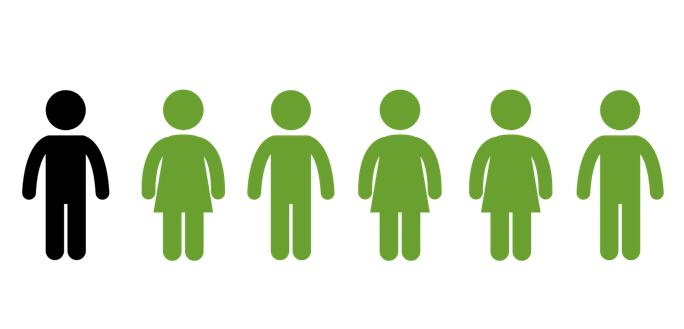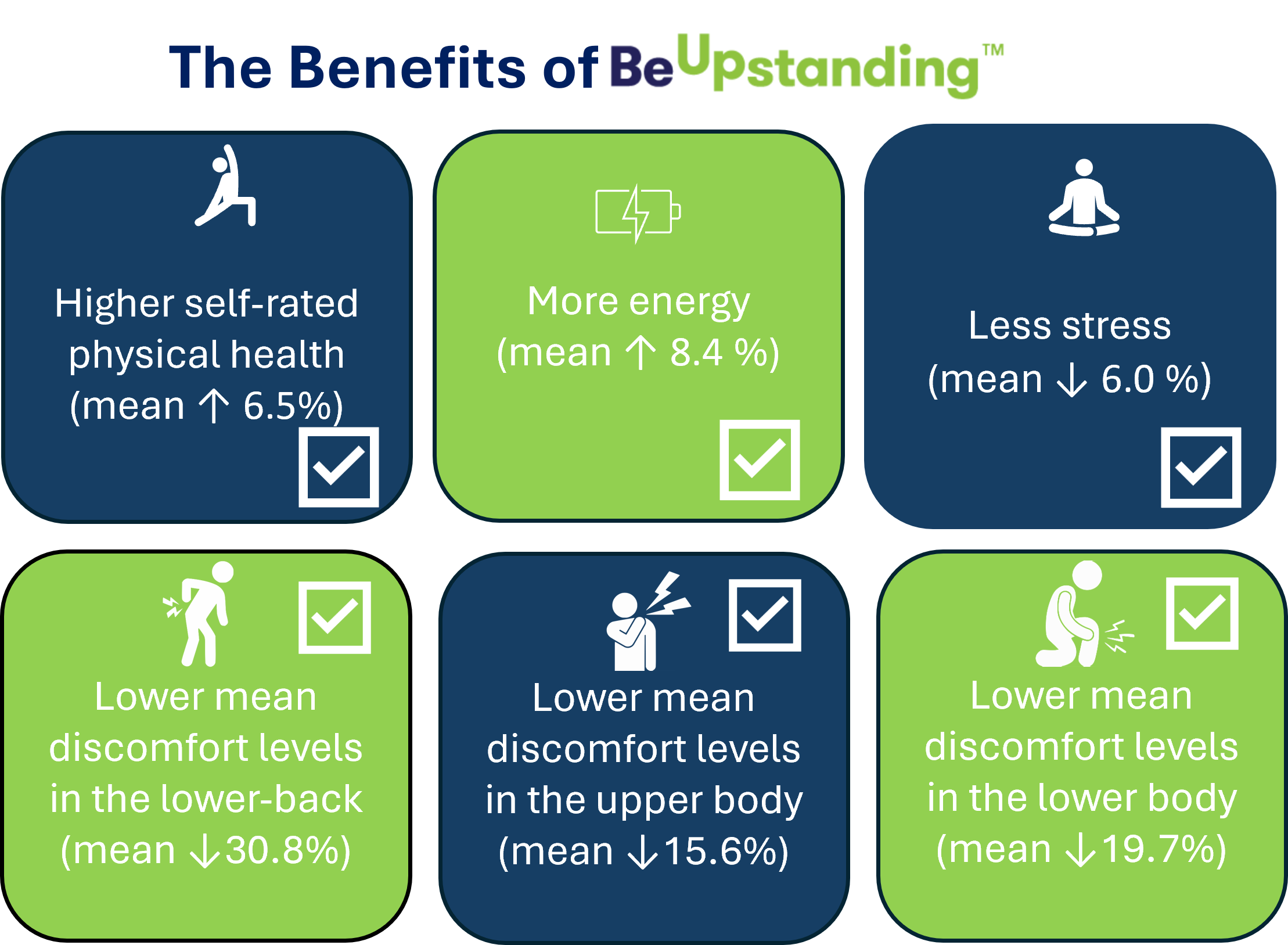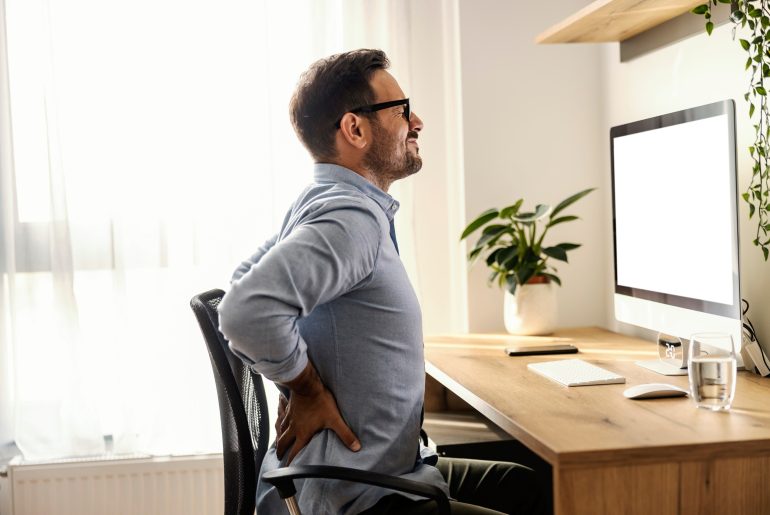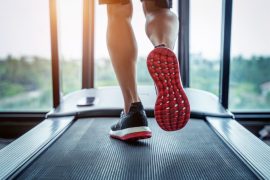Do you often find your back aching after a long day at work? If so, you’re not alone. Desk workers spend hours sitting every day at work, which makes back pain a common and often overlooked issue. What may start out as mild discomfort in the lower back can quickly worsen if not addressed, potentially impacting your work performance and overall well-being. In this article, we’ll explore how the BeUpstanding program can help prevent and alleviate discomfort in the lower back, whilst simultaneously providing a range of more general benefits, allowing you to stay healthier and feel more comfortable at work.
The Costs of Back Pain
Back pain is a common and costly problem for Australians. According to the Australian Institute of Health and Welfare (AIHW), approximately 4 million (16%), or 1 in 6 Australians live with chronic back problems.

Back pain alone costs the Australian healthcare system $4.8 billion annually and is the number 1 reason for lost work productivity and early retirement in the workforce. Back pain not only poses a great economic burden, but a major health burden as well. For example, it can lead to the need for health treatments such as physiotherapy. It can also potentially decrease mobility leading to more sedentary behaviour, and longer term outcomes such as increased risk of cardiovascular disease.
Prolonged Sitting and Back Pain
One cause of back pain is desk-based work. Here, workers are often exposed to long, unbroken periods of sitting on a regular daily basis. A systematic review published to the National Library of Medicine found that sedentary behaviour in the work-place or prolonged workplace sitting was associated with a moderate increase in risk or experience of lower back pain in adults. There are, however, ways to reduce the risk of back pain for those who have desk-based jobs. A study published to the National Library of Medicine found that an intervention targeting reduction in sitting time led to reduced lower back pain.

A Reminder about BeUpstanding
The BeUpstanding program aims to help desk-based workers to sit less and move more, while improving workplace culture. The program involves the introduction of a web-based toolkit complemented by an 8-week program run in the workplace to address excessive sedentary behaviour in desk-based work environments. The program uses a ‘train the champion approach’ through providing a step-by step guide to a designated representative staff member. Teams collectively choose the strategies they want to use to sit less and move more, with data collected before and at the end of the program to understand impact.
Measuring Discomfort in BeUpstanding
We used a modified version of the Nordic Musculoskeletal Questionnaire to assess discomfort areas by asking our participants to rate their level of discomfort they experienced on a scale from 0-10, where 0 indicated no discomfort at all and 10 indicated severe discomfort. We defined discomfort so that it included pain, aching, burning, numbness or tingling. Though pain and discomfort might not be directly comparable, discomfort suggests workers do not feel their best (or that they feel / uncomfortable/ unpleasant/ bothered).
Lower back discomfort in workers taking part in BeUpstanding
BeUpstanding was evaluated in a national implementation trial. Here, we asked 1692 workers pre-intervention if they had experienced any discomfort in their lower back within the last 7 days/past week with nearly 4/5 (78.6%) reporting they did! scoring an average 3.9 (out of 10) on their level of discomfort. After BeUpstanding, the rates of those reporting discomfort in their lower back dropped to 75.4%, while mean discomfort levels also significantly dropped to 3.3.
Desk-based workers with lower-back discomfort benefit from BeUpstanding
The proven benefits of the BeUpstanding program were also present for participants who began the program with above-average discomfort levels (4 or more). Despite pre-existing discomfort, these workers improved their health behaviours by sitting less, moving more, and sitting in a less prolonged manner. These participants also significantly decreased the average discomfort levels experienced in their lower back, had higher self-rated physical health, increased energy levels, decreased stress levels and lower discomfort levels in the upper and lower body too.

The BeUpstanding program is a win-win solution for all. Join us today and feel the difference because BeUpstanding has got your (lower) back! Please visit our website: https://www.beupstanding.com.au/ for more information.
This blog article was written by Zahra Kelana, a third-year Health Science student (Clinical Stream), during her placement with the School of Human Movement and Nutrition Sciences.
![]()










Comments are closed.